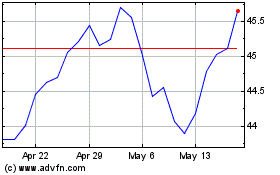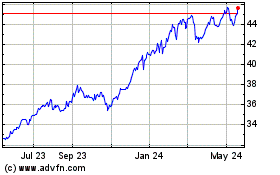Like many other emerging economies, concerns over the Indian
economy have been mounting since the beginning of the year as the
nation is grappling with internal and external economic issues.
Plagued with slowing economic growth, persistent sky-high
inflation, lower per-capita income and massive corruption, the
country is now experiencing the real pain from a weakening
currency. As a result, a lot is being written and said about
it.
The Indian rupee hit an all-time
low of 61.21 to a dollar due to a massive sell-off in the emerging
market currencies after the U.S. Fed chairman Ben Bernanke’s
earlier hint regarding curtailing the easy monetary policy later
this year. The currency depreciated 13.5% over nine weeks against
the dollar. A general risk-off trade, the recent firmness in the
dollar and a wide current account deficit resulted in the
currency’s weakness.
However, the rupee had recovered
a bit after Fed’s dovish comment to continue with accommodative monetary policy
in the near future. The currency recovered further and
reached it two-week high after the central bank announced some
tough measures to stem the slide.
The measures taken by the Reserve
Bank included increasing the interest rate on its short-term
liquidity window by two percentage points to 10.25% and capping its
daily liquidity window at 750 billion rupees.
In addition to raising short-term
borrowing costs and restricting funds available to banks, the
central bank also announced that would sell Rs 120 billion in
bonds, effectively draining liquidity from the market. While these
measures were successful in halting the fall in short-term, they
will affect economic growth in the longer-term.
Why Tumbling Rupee is a Key Concern?
India has a huge domestic market
and barring a few sectors like, gems and jewelry, textiles,
software, engineering goods, it is not an export oriented economy
as a whole. On the contrary, high levels of oil import are
resulting in continued trade deficits over the years.
As per
tradingeconomics, India recorded a
trade deficit of 1108.11 INR billion in May 2013. Over the last
four decades, its best trade performance was a surplus level of
13.91 INR billion in April 1991. Apart from Indonesia, India is
another Asian country to face a current account deficit. In such an
import-centric scenario, continued stress on the currency is not
surprising at all.
Weak exports also do not make
India immune to economic contagion from developed nations as most
of its export-partners like Eurozone and China are reeling under
pressure (Read: China ETFs Tumbling on Fears of Credit
Crunch). This has substantially
marred Indian exports because of reduced demand. Thus, India keeps
on witnessing current account deficit, higher than the tolerance
level, eating up the forex reserve and thus depreciating the
rupee.
Fallout
India’s inflation rate is
stubbornly high, above 10%, for more than one year now. As of
May 2013, India’s consumer price index stood at
10.68%, up 44 bpssequentially and 52
bps year over year. A continued fall in rupee will further
aggravate inflation.
Last but not the least, a weak rupee is sure to mar profits of
companies with high ECB exposure.
Quite expectedly, owing to such
shocks, India ETFs have been struggling this year, plunging double
digits in the year-to-date timeframe. Some popular ETF choices that
have been crushed so far this year include Wisdom Tree India Earning Fund
(EPI) losing 19.4%, PowerShares India Portfolio
(PIN) shedding about 14.1%, iShares S&P India Nifty 50 Index
(INDY) and iShares MSCI India (INDA)
being beaten down by about 13.3% and 10.5%. All above-mentioned
ETFs underperformed SPY in the past six months.

Is there Any Hope?
The current account deficit (CAD)
data for the first quarter signals a ray of hope which actually
narrowed down to $18.1 billion from the lofty levels of $31.9 billion in the
previous quarter. It was a sharp moderation in CAD to 3.6% for the
March quarter from 6.7% in the previous quarter. Further, the rate
is now not much higher than the 2.5% comfort zone of the Indian
central bank.
Second, while consumer inflation
still remains firm, the wholesale price index softened to 4.7% in
May indicating a third straight month of decline. In fact, the rate is now
within RBI’s comfort zone of 5.0%.
Third, the Fed’s comment that it
will continue with easy monetary policy should calm anxious
investors and lead to a quick shift in risk perception.
Fourth, the abundance of
technically skilled manpower put India’s outsourcing business on
fast track for the past few years. A weakened currency will likely
take this booming industry a step ahead.
Finally, policy easing on foreign
direct investment since last September is being implemented to
attract a large influx of capital.
Bottom Line
Even though the estimates hold
up, India still remains a strong growth vehicle in the global map.
Although cut from the prior level, latest projections for India’s
growth in 2014 of a respective of 5.8% and 6.1% by IMF and World Bank are still quite high when
compared to many of its western as well as eastern counterparts
(read: Forget China, Buy These Emerging Market ETFs
Instead). A set of reformative
measures, aimed primarily at building an investor-friendly climate
have actually created a buzz in the recent months (see more ETFs in
the Zacks ETF
Center).
While a plunging currency has
sent the Indian market on pins and needles lately, leaving little
scope of improvement anytime soon, we can look at the attractive
valuation as an indication of a good entry point to Indian ETFs for
risk-tolerance investors (Read: India ETFs: Back on
Track?).
Investors might also want to
consider positive factors like a rising middle class and a younger
population with growing spending power as these would result in
soaring domestic consumption and economic growth. Considering
these, the India ETF outlook—at least over the long term—isn’t as
grim as one might think.
Want the latest recommendations from Zacks Investment Research?
Today, you can download 7
Best Stocks for the Next 30 Days. Click
to get this free report >>
WISDMTR-IN EARN (EPI): ETF Research Reports
ISHARS-M INDIA (INDA): ETF Research Reports
ISHARS-SP INDIA (INDY): ETF Research Reports
PWRSH-INDIA POR (PIN): ETF Research Reports
To read this article on Zacks.com click here.
Zacks Investment Research
Want the latest recommendations from Zacks Investment Research?
Today, you can download 7 Best Stocks for the Next 30 Days. Click
to get this free report
WisdomTree India Earnings (AMEX:EPI)
Historical Stock Chart
From Mar 2024 to Apr 2024

WisdomTree India Earnings (AMEX:EPI)
Historical Stock Chart
From Apr 2023 to Apr 2024
